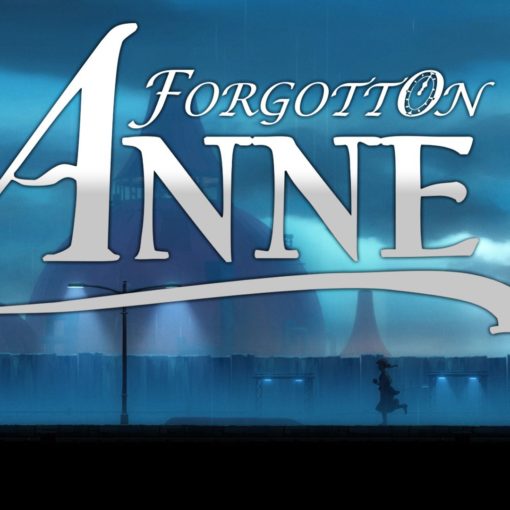In a recent article on CNN.com, Omar Gallaga, who is a technology contributor to NPR’s All Tech Considered, feels “haunted and sad” by what he considers a disturbing trend in video games—“putting children in peril and, often, allowing them to be gruesomely killed.”
The trailer for a new survival horror game has been generating a lot of Internet buzz. According to Gallaga, many people have proclaimed it “best game trailer ever released.” After watching it, though, Gallaga did not share these opinions and wrote “why [he] can’t get behind Dead Island.”
The trailer for Dead Island is reminiscent of the television show Lost. The world spirals out of the opened eye of a little girl. She has recently fallen to her demise after her father—in order to protect himself from his zombified child—flung her from his back and accidentally out a window. The trailer is in slow motion and told in reverse. The music is haunting, and it, too, reminds one of Lost. Indeed, it is hard not to make such associations when the title of the game is Dead Island.
The age of the average gamer is 35. This means that many of the players (and designers) are likely to be parents. Even as a nonparent, I felt a particular amount of pathos and poignancy when watching the game’s trailer.
In it, we see a little girl lying in the grass, eyes agape. We follow her body back through a broken window, eventually seeing a family rushing down a hallway, trying to outrun an onslaught of zombies. The daughter, though, is bitten, and soon, she is transformed. The rendering of this dreadful event—again, told backwards—is artfully done.
In fact, what the creators do here is show us a family in peril. At the end of the trailer, we see them all smiling and happy. Many people might be able to relate to those moments of happiness before some terrible happening “ruined” their family. You can feel the father’s helplessness. You can feel the intensity of the threat facing this family. One could argue that the “zombies and their attack” can be viewed as metaphoric—representative of any horrible agent that results in the death of innocence.
Gallaga tell us: “As a gamer and as a parent of two little girls, I can say that as much as I admire the craft of putting such a game trailer together, it’s not one that I can enjoy. The game itself may turn out to be fantastic, but the cinematic preview strikes me as exploitative and cynical, a successful marketing ploy meant to evoke shock and pity.”
In fact, he is “uncomfortable” with several games, singling out Bioshock and the “little sisters” (to harvest or not to harvest?), Heavy Rain, and Dead Space 2 in which you kill Gollums that used to be little children. In all of these games, except Heavy Rain, the children have become something “other” than human.
I must confess that I did not find the trailer “exploitative” myself, unless he means to indicate that the designers were trying to “exploit” our emotions, but then, many mediums aim to do that. Isn’t that what art attempts—to make us feel, to move us in some way? I was impressed by the trailer for opposite reasons. I was relieved to see that there was sadness at the death of this character—not always typical in games or movies, unfortunately.
However, it seems that not everyone is inclined to interpret games the same as movies and literature. Gallaga even questions: “Would the ‘Dead Island’ trailer work as a live-action preview of a movie or would it have provoked outrage?”
Gallaga feels that video games are working hard to “push the envelope” and continue to distinguish themselves as edgy. He says: “The video game industry, which has strived since the 1980s to have the same cultural cachet as TV and movies, has found a taboo that can make gamers feel like they’re consuming more mature, provocative entertainment.”
But, has Gallaga not watched Zombieland? In the movie, the narrator says, “As zombies began to outnumber humans…That’s when you have to cut all emotional ties. If the girls in your neighborhood are now fucked up little monsters…Oh, maybe it’s time to stop driving car pools.”
Then, we watch a mother drive her SUV away while a host of zombified little girls cling to windows, back bumper, etc. Perhaps, these types of things are simply part of the zombie genre?
One has to wonder if has Gallaga watched The Bad Seed, The Good Son, Children of the Corn, Village of the Damned, The Ring, or any of the “evil child” movies? There are so many that they must be their own genre. Did he skip Shutter Island? The list of movies where a child suffers a violent death could go on and on. If this is a disturbing trend in games, it is also one in movies, and it has been for years.
What separates video games from other mediums? Are people more disturbed by video games delving into the same shadowy space as movies because games offer the illusion of “participation”?
Let’s consider: is it worse to be a supposed “participant” because you’re holding a game controller, or a voyeur sitting in a darkened theater munching popcorn while actors perform these same horrifying visions for our passive amusement?
According to the book Reset by Rusel DeMaria, generally, gamers do not consider the characters in a game as “real.” They do not feel any more remorse for dispatching a “little sister” than a baseball player feels when he whacks a ball into the stands. The characters, no matter how realistically rendered, are simply part of the game, a character, a figment of someone’s imagination. They are a tool, a device, an aspect of the narrative.
In the end, I am reminded of Marilyn Manson’s words in his essay “Columbine: Whose Fault Is It?” He states: “It is sad to think that the first few people on earth needed no books, movies, games or music to inspire cold-blooded murder. The day that Cain bashed his brother Abel’s brains in, the only motivation he needed was his own human disposition to violence.”
Perhaps what disturbs people most is that human beings tend to be violent and the mirror that our art holds up to our noses is not always comfortable. And, frankly, maybe it shouldn’t be.




